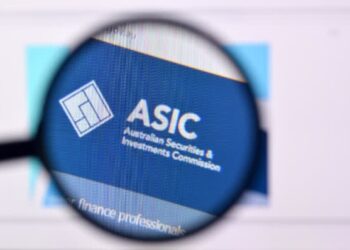On Thursday morning, Australian Securities and Investments Commission (ASIC) chair Joe Longo said that the regulator’s transformation work over the past three years helped it “review and clarify its focus areas”.
“While the overarching themes of our existing strategic priorities remain consistent, our updated Corporate Plan demonstrate how we are evolving and adapting to the changing needs of our operating environment,” Longo said.
“As the agency embeds the new structure we implemented last year, we are better able to anticipate and respond to threats and opportunities.
“The new structure and our strategic priorities are also helping better guide decisions about how to deploy ASIC’s limited resources.”
Included in the regulator’s strategic priorities as a key activity is supporting Treasury as it progresses the Delivering Better Financial Outcomes (DBFO) reforms.
“We will continue to provide input into the reforms, and help implement any changes through guidance, legislative instruments and other relevant ASIC documents,” ASIC said.
In a June Senate economics legislation committee hearing on the first DBFO bill, deputy chair Andrew Bragg expressed surprise at the level of involvement that the corporate regulator had in the process of drafting the bill.
“I wonder whether they’d be better at more enforcement if they weren’t spending time talking about how new laws might be created,” Bragg said at the time.
ASIC commissioner Alan Kirkland defended the regulator’s involvement, calling it “part of the normal process of developing legislation”.
“ASIC also provided advice on whether we were able to administer the law consistent with the government’s policy intent based on the information provided,” Kirkland said in June.
“The quality assurance process normally involves, as part of that longstanding practice, where ASIC is required to administer part of the law, the draft provision has been provided to ASIC so that ASIC can provide advice on whether we’re confident we’ll be able to administer that law in line with the government’s policy intent.”
Also listed as a key activity was supporting the implementation of the Compensation Scheme of Last Resort (CSLR).
“While the CSLR is an independent and not-for-profit company, ASIC is responsible for administering a levy system and has oversight of the CSLR,” the regulator said.
“We will also cancel AFS licences and credit licences where the CSLR operator has paid an amount of compensation in relation to a determination from the Australian Financial Complaints Authority (AFCA) that was not paid by the licensee.”
The first such instance of ASIC cancelling an AFSL as the result of a CSLR payment was announced earlier this week, when the regulator took action against former national financial advice business Libertas Financial Planning.
ASIC noted that it would conduct surveillance of personal advice provided to retail clients about the establishment of SMSFs.
“The surveillance will assess the quality of advice by financial advisers and consider the role of AFS licensees,” it said.
“Where appropriate, we will take enforcement or other regulatory action against misconduct.”
In his statement, Longo detailed the numbers around its investigations, civil proceedings, and criminal convictions.
“In the last year alone we commenced around 170 new investigations – an increase of about 25 per cent, and we filed 33 new civil proceedings in the Federal Court – an increase of 27 per cent in civil proceedings on the previous year,” he said.
“Our investigations have led to 18 criminal convictions and seen a further 23 individuals charged by the Commonwealth Director of Public Prosecution for criminal offences.”
Longo added: “ASIC is one of Australia’s most active law enforcement agencies. We are in court nearly every day of the year to hold those who breach the law to account and to deter misconduct.”
ASIC funding
According to the regulator’s corporate plan, ASIC has total available funding of $592 million for 2024–25, which represents a 10 per cent increase on the previous year. The figure includes a departmental operating appropriation of $580 million, an increase of 13.5 per cent.
“This increase is mostly due to measures announced in the 2024–25 budget, such as the RegistryConnect program,” ASIC said.
“ASIC’s resources are allocated to our regulatory activities as well as our enabling functions. Where possible, we aim to maintain flexibility to ensure that our priorities can adapt to changes in our regulatory environment during the year.
“Under the industry funding model, the majority of our regulatory costs are recovered from the industry sectors we regulate. In 2024–25, we estimate that we will recover $408 million in fees and levies (69.9 per cent of total appropriations received).”
Budget documents released in May noted that the cost of the stabilisation of business registers and modernisation of legacy systems would be “partially met from cost recovery through ASIC and APRA industry levies”.
Speaking with ifa following the budget announcement, Financial Advice Association Australia general manager policy, advocacy and standards Phil Anderson particularly noted the funding for registers as important for advisers.
“There was supposed to be a transfer of the registers from ASIC to the ATO that the government then decided not to do and obviously, this particular one signals that the government is looking at enhancing or rebuilding the registers within ASIC,” Anderson said.
“I think anytime they are going to provide additional money to ASIC, unless they say otherwise, we can assume that there’s a risk that it will be caught in the industry funding levy.
“Where it refers to registers, we have the AR register, we have the financial adviser register, we probably pick up a proportion of the cost of the AFSL registers. So, they are going to charge us.”
ASIC also broke down its 2023–24 estimated regulatory effort by regulatory activities, which it noted was based on regulatory effort, not internal budget allocation.
It said that 57.6 per cent of its regulatory effort went to enforcement, 29 per cent to supervision and surveillance, 5.2 per cent to policy advice, 4.6 per cent to industry engagement, 2.1 per cent to education, and 1.5 per cent to guidance.




The ASIC Act 2001 states that ASIC ” regulates the conduct of Australian companies, financial markets, financial services organisations (including banks, life and general insurers and superannuation funds) and professionals who deal in and advise on investments, superannuation, insurance, deposit-taking and credit.”
Mr Kirkland. a recent arrival at ASIC, clearly thinks HE is there for a different purpose. “ASIC commissioner Alan Kirkland defended the regulator’s involvement, calling it “part of the normal process of developing legislation”.”
ASIC is a regulator! ASIC was never a policy development organisation, nor a legislation development organisation. Responsibility for that under our system lies with Treasury and then the appropriate minister. Having ASIC with a seat at the table which is developing financial services legislation is in my view a circumstance of potential conflict. You know the sort of conflict that Standard 3 is supposed to eliminate
In the scheme of things in government, regardless of who is in power, it is appropriate for Treasury to consult with ASIC as to implementation of the policy ideal. ASIC should be commenting on process, not on the POLICY that drives that process. It’s not their job!!!!
We suspect Mr Kirkland is driving the change. Mr Kirkland of course for many years occupied the empty vessels at “choice” which started life as a tester of refrigerators and televisions and for many years did a very good job this at that Ltd level. But like any other consumer organisations, as he has been funding them to do their jobs stop this
They messed up the first tranche with Treasury so poorly there is toilet paper which reads better, maybe just stick to regulatory work not bastardising future changes. Bloated over-funded morons. Scammers thrive while professional advisers who help clients without being paid by a product provider are over-taxed and witch-hunted. Disgrace
Most of the problems which led to the shortage of advisers and drastic escalation in cost for consumers were either directly or indirectly caused by ASIC’s meddling in our profession. So in that context, I think it would be best for Australian consumers for ASIC to stay well away from the next set of reforms. If they actually want to do something positive for Australian consumers, they should immediately announce a no-action position on firms who implement the previous set of forms early (ie. implement now rather than waiting until January).
Is there a bigger example of fee for no service than ASIC? They have played a massive part in why most people cannot access or afford qualified and quality advice, pushing them into the hands of scammers. They refuse to answer reasonable questions from the Senate committees on their actions and inactions which have directly lead to consumer harm. They are pushing ahead with a clearly flawed CSLR system, fully aware it encourages bad behaviour which is funded by those doing the right thing. Consumers are in a significantly worse position now than 12 months ago, and for that they get a 10% raise. Unbelievable.